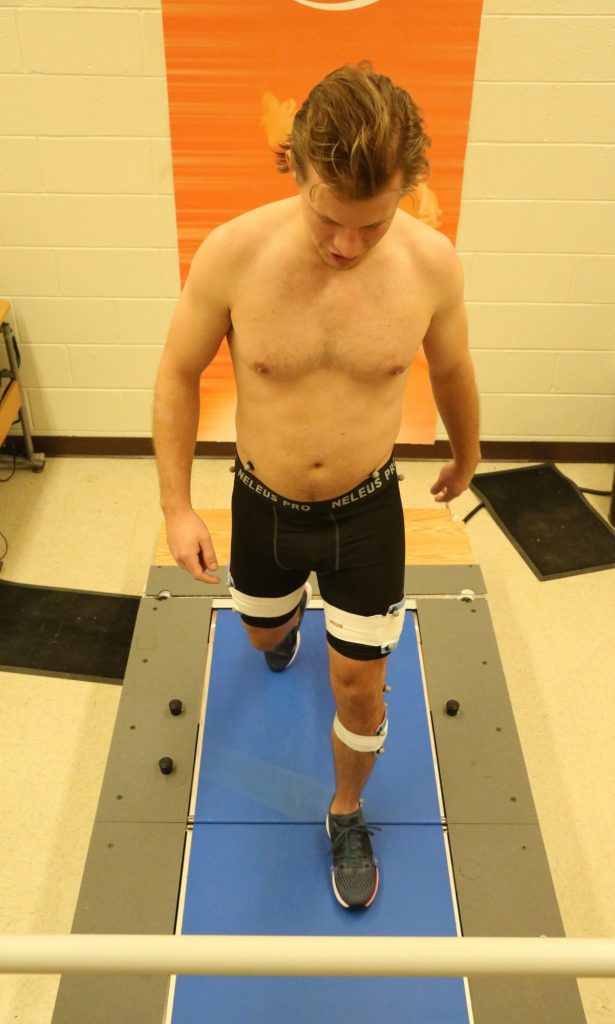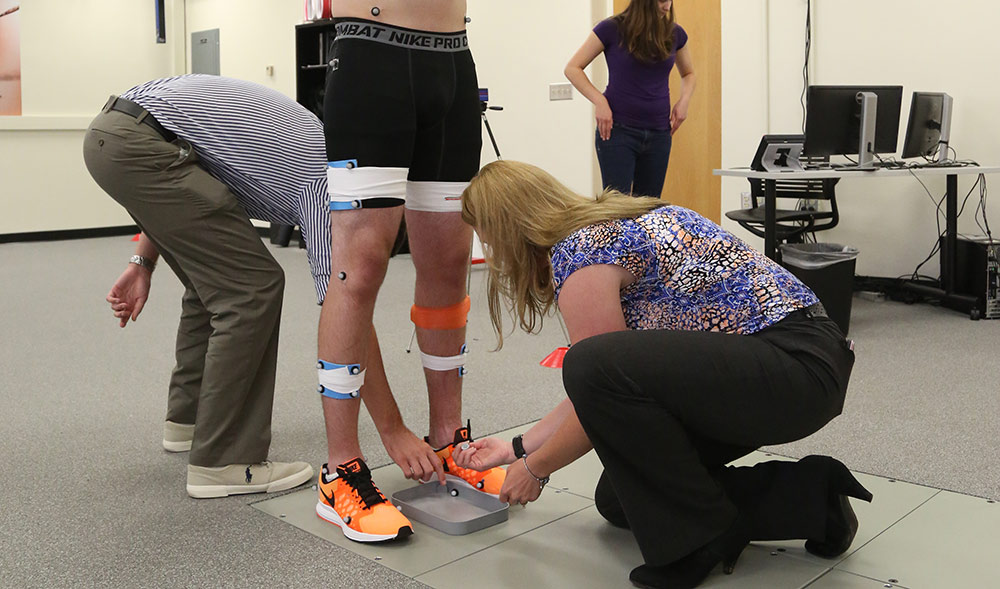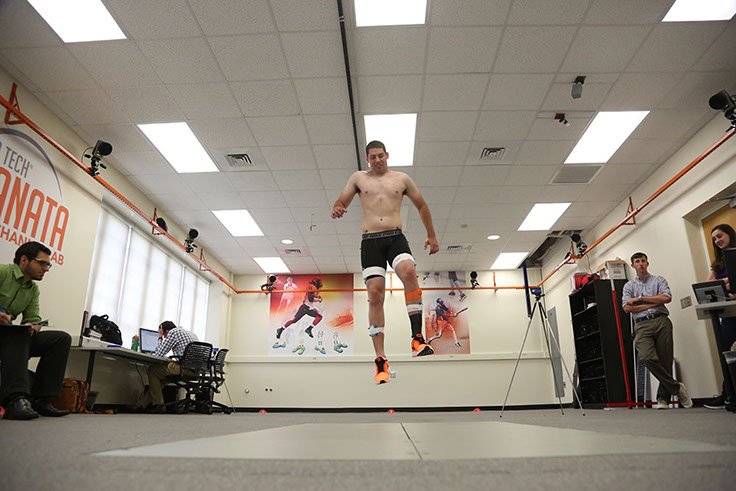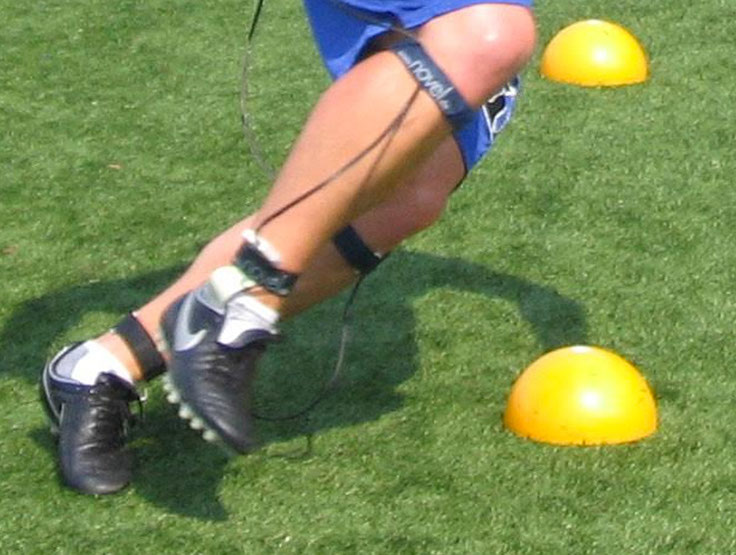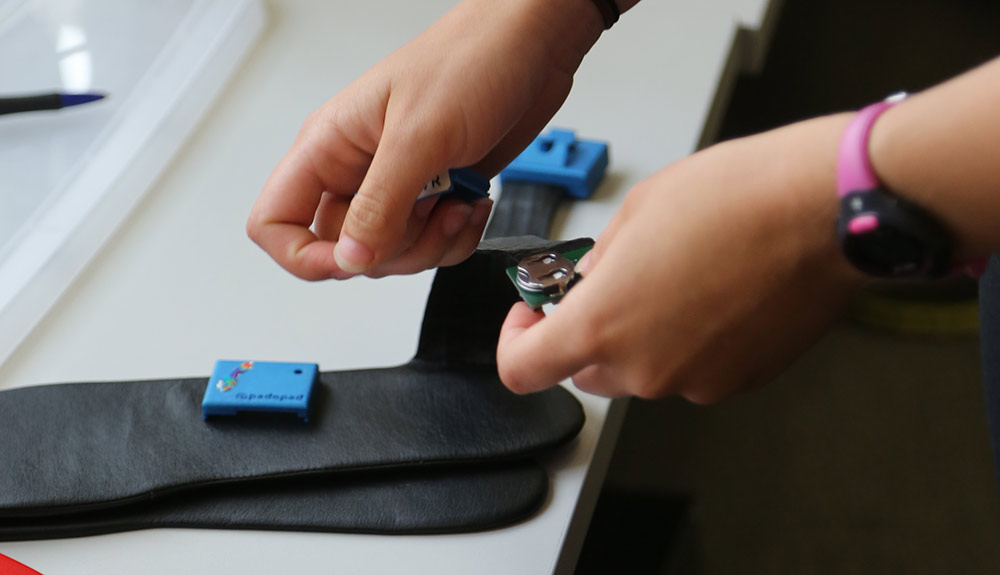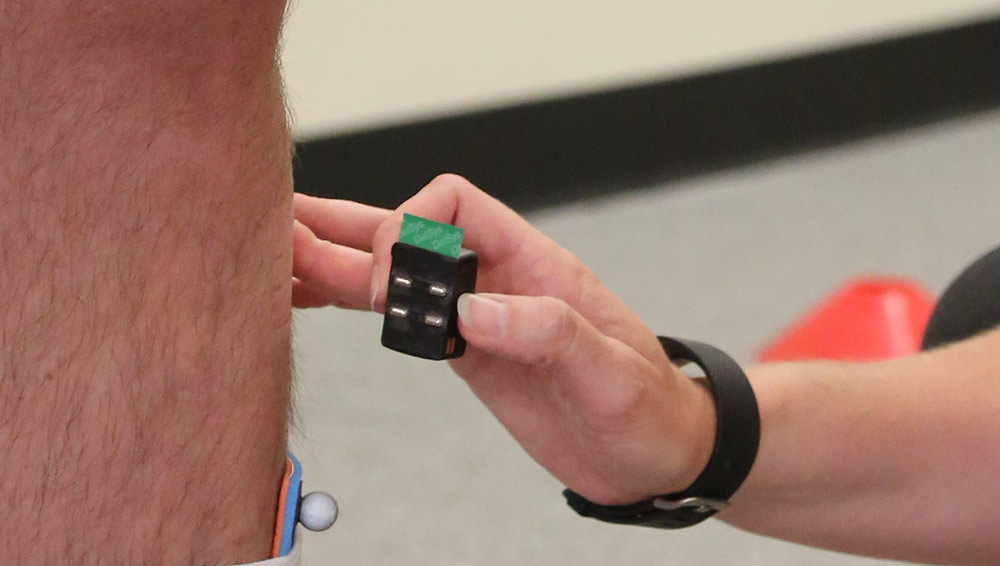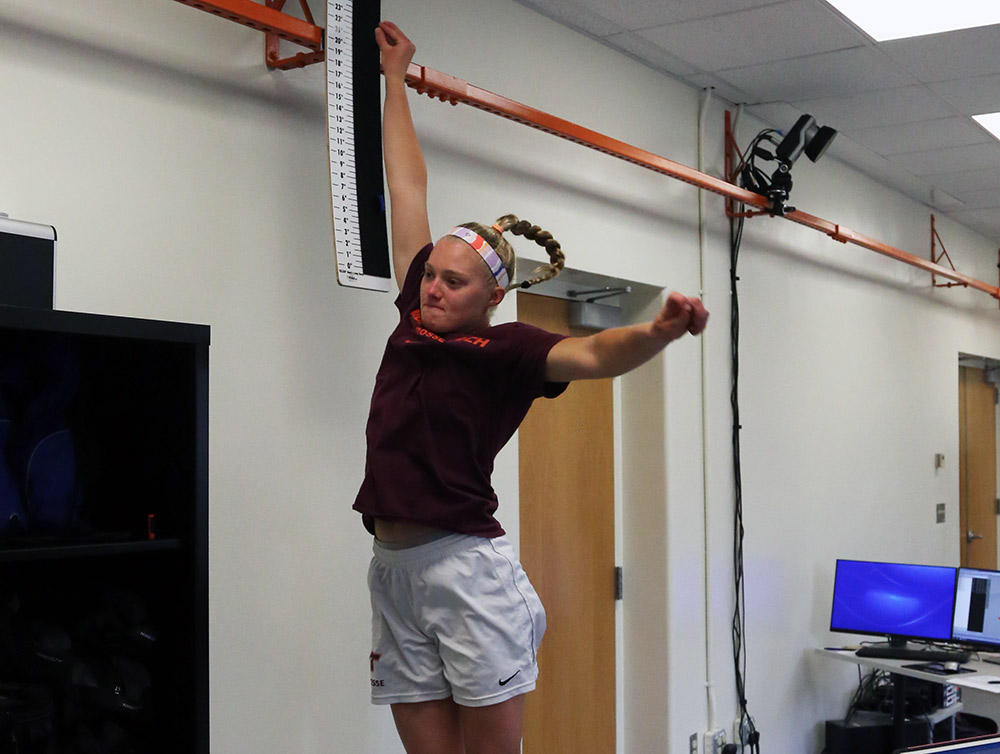Instrumented Treadmill
The Granata Lab has an AMTI split-belt fore-aft instrumented treadmill (Watertown, MA), which is equipped with front and back AMTI force plates and corresponding belts. The treadmill can be used to monitor ground reaction forces in the anterior/posterior, medial/lateral, and vertical directions and corresponding free moments about each axis. Additionally, the treadmill incline and belt speed for both the front and back force plate belts can be adjusted. The force and moment data obtained from these force plates can be used to understand both ground reaction forces as well as joint moments, in conjunction with kinematics data, during walking or running.

